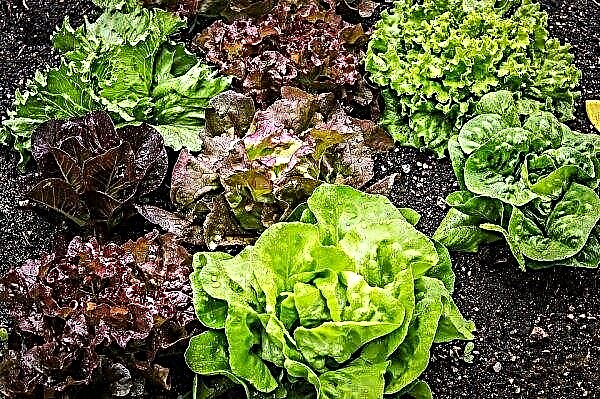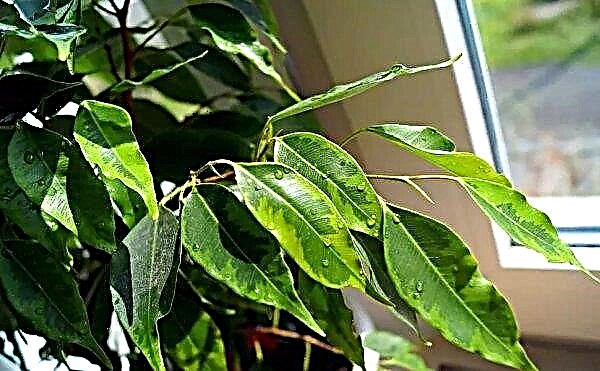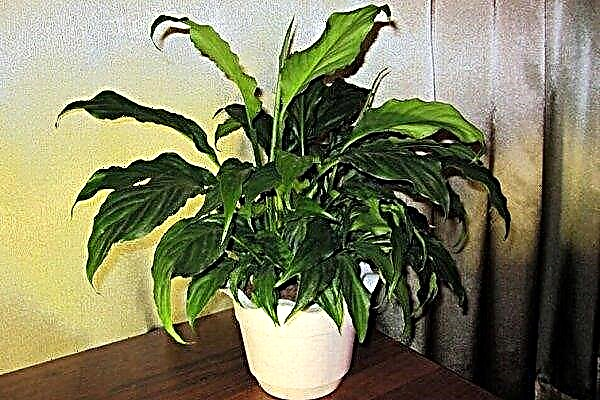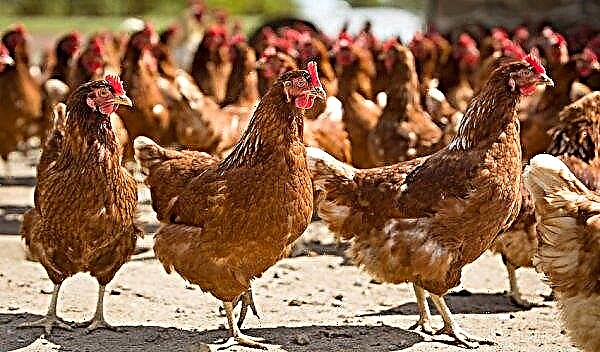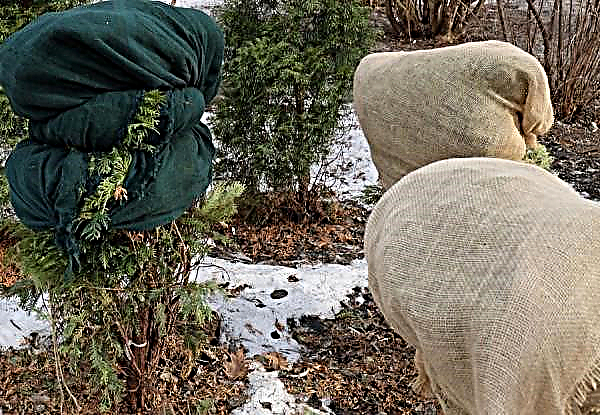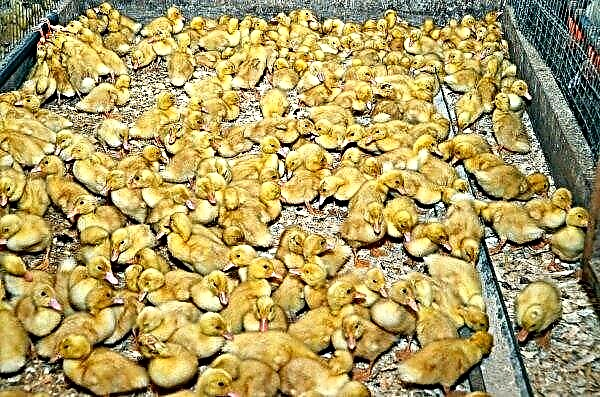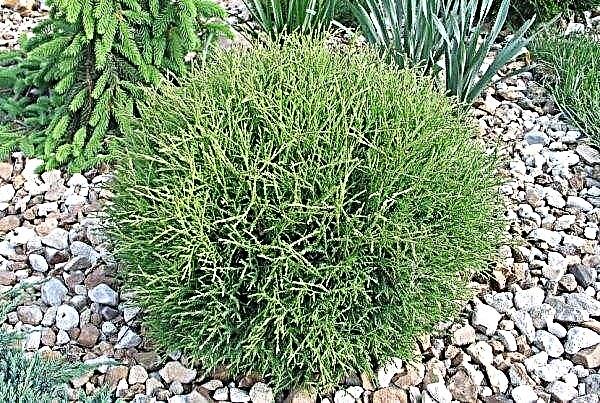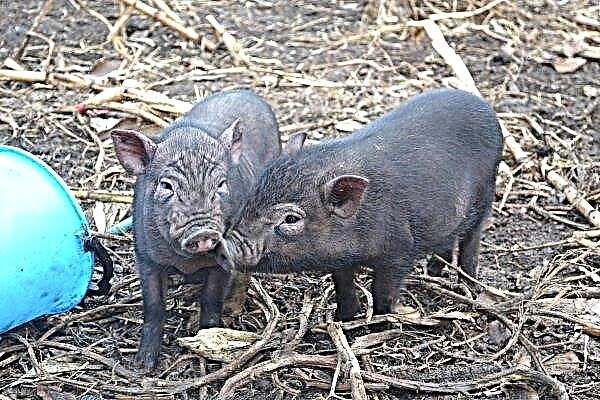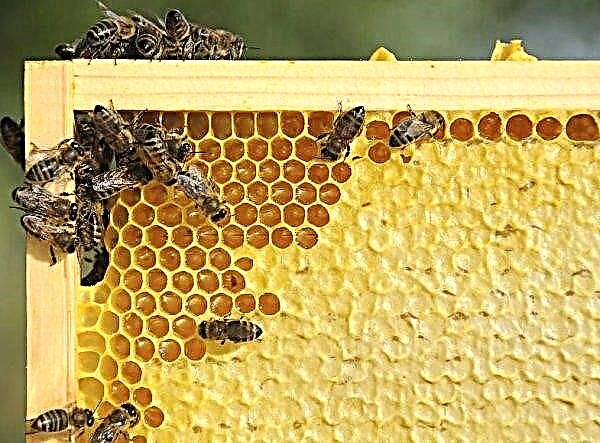In the list of diseases from which your pigeons can suffer, one of the most infectious can be called smallpox. Although sick birds often survive, the consequences for their health can be catastrophic. What is this disease, why it arises and how to deal with it - this is the topic to which this article is devoted.
What a disease
Smallpox is a viral disease that occurs in an acute form and affects the mucous membranes and skin of pigeons. Very common, can occur chronically when the bird becomes a virus carrier. Young animals are susceptible to the disease, older pigeons carry the virus. The main transmission routes:
- blood-sucking insects;
- droppings of infected birds;
- mucus excretion of virus carriers;
- air;
- feeding troughs and drinking bowls, other equipment.

Development reasons
The onset of the disease is contributed by:
- lack of ventilation in the pigeon;
- non-observance of cleaning and disinfection rules;
- lack of food;
- unbalanced diet, the body lacks vitamin A;
- non-compliance with temperature conditions, unheated premises;
- increased humidity in the dovecote;
- wounds on the body of pigeons;
- molting period;
- contacts with wild pigeons;
- weakened immunity.
Important! A characteristic feature of smallpox in pigeons is that up to 8 weeks it is asymptomatic, continuing to spread to other birds.
Forms and Symptoms
Symptoms of smallpox will vary depending on how the virus manifests itself:
- skin;
- diphtheria;
- mixed.
 Common features of all forms are:
Common features of all forms are:- apathy;
- hanging wings;
- feathers sticking up.
Important! The initial manifestations of smallpox can be mistaken for symptoms of other diseases, so timely access to veterinary care is of particular importance.
Skin
The skin form of the disease is characterized by redness and inflammation of the skin:
- near the ears;
- at the junction of the beak with the head;
- where the upper and lower parts of the beak are connected;
- on the mucous membrane of the eyelids;
- on the paws.
 Inflamed areas turn into purulent formations that harden, become like warts and acquire a dirty yellow color. Feathered pus is released, which impairs vision, hearing, appetite, leads to photophobia, wheezing, it becomes painful to keep the beak closed. Then there is a defeat of other tissues and organs, a lethal outcome is possible.
Inflamed areas turn into purulent formations that harden, become like warts and acquire a dirty yellow color. Feathered pus is released, which impairs vision, hearing, appetite, leads to photophobia, wheezing, it becomes painful to keep the beak closed. Then there is a defeat of other tissues and organs, a lethal outcome is possible.Did you know? Pigeon's vision does not deteriorate from laser beams, electric welding, flash and bright sun.
Diphtheria
The diphtheria form (another name is yellow cork) is characterized by the formation of a film in the mouth, nasopharynx, goiter, throat, which fuses with the mucous membranes. The disease manifests itself as follows:
- yellow or white spots form on the mucous membranes, which gradually turn into films;
- it is difficult for birds to swallow and breathe;
- they groan and wheeze;
- keep the beak open;
- there is a purulent runny nose;
- tumors form under the eyes.

Mixed
With a mixed form, the skin and mucous membranes of the respiratory organs are affected, it is difficult for birds to carry it. The acute course of the mixed form lasts about a month, after the growths disappear.
Did you know? Pigeons are a couple for life, but sometimes the females leave their partner with the children and “run away”.
How to treat smallpox in pigeons
Pigeons, in which the disease was detected, are placed separately, they can no longer be used for breeding, they are cleaned and disinfected in the pigeonhole. Healthy birds are given sanitized water with:
- 1% solution of chloramine or salicylic acid;
- potassium permanganate (1 to 1000);
- a solution of furatsilin in a dosage of 3-5%;
- vitriol;
- iodinyl.

Veterinary drugs
An effective remedy for growths to cleanse them with smallpox is a 2% solution of boric acid, which is treated with growths. In addition to it, for external processing using a cotton swab use:
- To cleanse: Lozewal antiviral drug or furatsilina solution.
- For cauterization: iodine, lapis pencil, Lugol's solution.
- To mitigate: baby cream, ointment with tetracycline.
Smallpox medicines only work if treatment is started immediately. These include antibiotics:
- Tetracycline;
- Terramycin;
- Tilan;
- Biomycin;
- Enrofloxacin.
Folk remedies
The forums offer several options for strengthening immunity and preventing problems:
- Peeled peeled garlic (2 heads) and chopped onion with husk, add 2 tablespoons of dried rosehip berries and 1 spoon of honey, pour 0.5 l of alcohol with a strength of 60–65 °, insist in a dark place for 2-3 weeks, strain. Add 1 teaspoon per 1 liter of water to the feathered water.
- Grind a few crude heads of garlic through a meat grinder, mix with 1 kg of honey, insist on 1 liter of vodka for 2 weeks in the dark. Strain and refrigerate. Add to the water at the rate of 1 tablespoon per 10 liters of water.
- Peel 3 large onions, chop. Peel 15 heads of garlic, pass through a press. Crush 100 g of rosehip berries. Add 50 g of dry calendula and chamomile, 100 g of dry oak bark, 1 kg of honey, pour 1 liter of vodka. Insist in a warm place for 1 week, add in the summer to the water at the rate of 1 teaspoon per 5 liters of water.
- Insist 1 tablespoon of propolis in 3 liters of water and add to the water for a week.
- Add 1 teaspoon of flower pollen (bee bread) to 1 kg of feed.
- Insist needles on warm water for a day and add to water.
Vaccination
The most effective means of control is vaccination given at the age of 6–10 weeks. For this, smallpox vaccines Nifulin, Nobilis Paramikso, La Sota or Diphthopharm are bred to the state of solution and injected into the membrane on the wing of the pigeon. For up to 1 month, inflammation will occur at the vaccination site, which will soon pass. A second vaccine for young pigeons is carried out in a month, then the procedure is carried out annually, it is best before the seasonal increase in the risk of infection. Dry vaccine is applied with a clean, dry brush to the feather growth site, tearing a few pieces on the outside of the lower leg.
A second vaccine for young pigeons is carried out in a month, then the procedure is carried out annually, it is best before the seasonal increase in the risk of infection. Dry vaccine is applied with a clean, dry brush to the feather growth site, tearing a few pieces on the outside of the lower leg.
Important! You can not vaccinate sick pigeons.
General preventive measures
To prevent the disease, it is recommended:
- Inoculate the birds regularly.
- Timely and correctly clean the room: spray with 2% sodium hydroxide solution, 3% chlorocresol solution, 2% formalin solution, a mixture of 10 g of copper sulfate with 1 liter of hydrated or bleached lime, leave for 1 hour. Clean the room of litter and dirt, wash the feeders, drinking bowls, equipment and spray again. Thoroughly rinse off the remaining disinfectant.
- To combat insects, burn the entire internal contents of the dovecote with a blowtorch once a month.
- Feed the birds according to the norms, monitor the balance of the feed.
- Ventilate the dovecote, equip ventilation holes.
- Observe indoor temperature requirements.
- Place newly acquired birds in quarantine for 1 month.
 Based on this, the owners should be more attentive to the health of their birds and, if the first symptoms of the disease occur, transfer them to quarantine and consult a doctor. It is difficult to treat smallpox, so you must follow the rules for keeping pigeons and vaccinate them in a timely manner to prevent the problem before it occurs. Then the birds will delight you with their health and excellent appearance.
Based on this, the owners should be more attentive to the health of their birds and, if the first symptoms of the disease occur, transfer them to quarantine and consult a doctor. It is difficult to treat smallpox, so you must follow the rules for keeping pigeons and vaccinate them in a timely manner to prevent the problem before it occurs. Then the birds will delight you with their health and excellent appearance.

